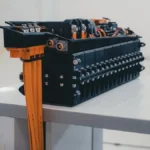India has taken the top spot globally for electric three-wheelers, according to a new report from the International Energy Agency (IEA). These battery-powered vehicles are now extremely popular on Indian roads. The Hitavada reports that electric three-wheeler sales grew nearly 20% in 2024, reaching about 700,000 vehicles.
Understanding India’s Three-Wheeler Revolution
Three-wheelers in India are small vehicles used for both passenger transport and goods delivery. They look like a motorcycle in front with a cabin behind. These electric versions have become very common because they are cheaper to run than gas-powered ones. In 2024, electric models made up almost one-quarter of all three-wheelers sold in India.
What makes this achievement remarkable is that India has overtaken China, which has stopped growing in this area. Electric three-wheelers reached a record 57% market share in certain segments, showing how quickly drivers are switching to electric options.
How Government Support Makes a Difference
The PM E-DRIVE scheme is a big reason for this success. This government program has set aside USD 1.3 billion (about Rs 11,103 crore) to help more people buy electric vehicles. The money will last until March 2026.
- Purchase help: The scheme gives buyers money back of up to Rs 5,000 for each unit of battery power (per kWh) when they buy electric two-wheelers.
- Target vehicles: The money supports mainly two-wheelers and three-wheelers, which most regular people use every day.
- Market impact: These government incentives have made electric options much more affordable for average Indians.
Two-Wheeler Market Growth and Manufacturing
India’s electric two-wheeler market has exploded with competition. There are now 220 companies making these vehicles. The top 80 manufacturers can produce 10 million vehicles per year. This huge production ability means more affordable options for buyers.
The first three months of 2025 already saw 35,000 electric cars sold across the country. All battery electric vehicles made by Indian companies cost less than USD 20,000 (about Rs 17 lakh), making them more accessible to middle-class families.
Progress in Other Electric Vehicle Types
Electric buses have also seen impressive growth. The number of electric buses in India jumped dramatically from less than 3,000 to more than 11,500 by the end of 2024. These buses help reduce pollution in crowded cities and make public transportation cleaner.
Chinese companies are entering the market too. SAIC, which sells the MG Comet EV in India, is one example of foreign manufacturers competing with local companies like Ola, which leads the electric two-wheeler segment.
Looking Ahead for India’s Electric Future
With continued government support and increasing competition, India’s electric vehicle market will likely keep growing rapidly. The combination of affordable options, policy incentives, and expanding manufacturing capacity positions India to remain a global leader in electric mobility, especially in the three-wheeler segment that serves millions of daily commuters.











